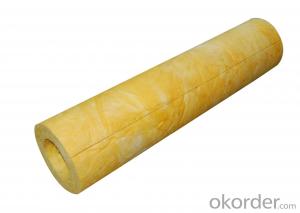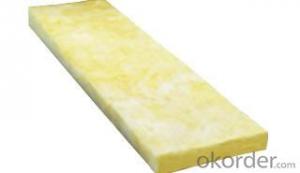Glass Wool Insulation Glass Wool Insulation Manufacturers
- Loading Port:
- Tianjin
- Payment Terms:
- TT OR LC
- Min Order Qty:
- 5000 m²
- Supply Capability:
- 20000 m²/month
OKorder Service Pledge
OKorder Financial Service
You Might Also Like
1.Description of Glass Wool Blanket:
Rockwool products have many practical uses; the following are some of the main fields:
In the Thermoacoustical field Rockwool is used for the insulation of buildings of all types and uses, such as houses, department stores, offices, athletic buildings, airports, etc.
In insulating industrial plants buildings and mechanical systems like:
Cooled stores.
Refineries.
Chemical and Petrochemical Plants.
Central Air conditioning.
Hot water and chilled water systems.
For industrial purposes, Rockwool is used in many industries as:
Industrial furnaces and ovens.
Boilers.
2.Main features of Glass Wool Blanket:
1) High temperature heat-stability, durability, high temperature shrinkage resistance
2) Damp proof property, with the hydrophobicity are not less than 98%
3) Excellent fire proof performance, European standard non-flammable class A material
4) Non-poison, not contain rock wool and doesn't grow the mould etc.
3.Glass Wool Blanket Images:
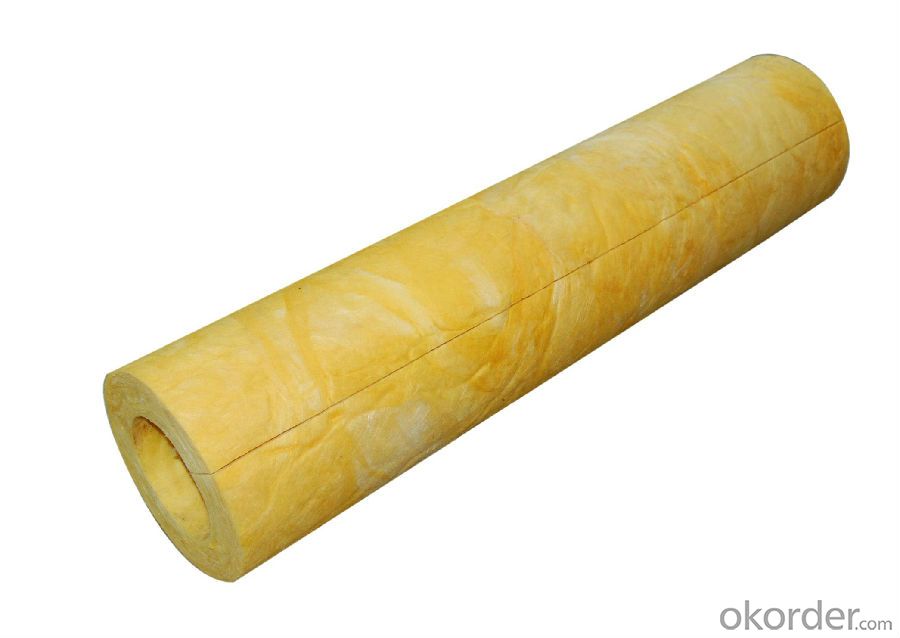

4. Glass Wool Insulation Blanket Technical Parameters:
Property | High/low temperature resistance, oil and fuel resistance, weathering resistance, O zone resistance etc. |
Shape | According to your requirement. |
Color | Any color is available ,according to your requirements. |
Material | NBR, CR, SBR, EPDM, IIR, NR, EP, Silicone, VITON etc. |
Hardness | 30-90ShoreA |
Delivery | In 10 days |
Packing | Plastic bag & carton box or according to your requirements. |
Application | Electronic field, industrial machine & equipment, house-hold appliance, telecommunication, automobile, medical equipment industry etc. |
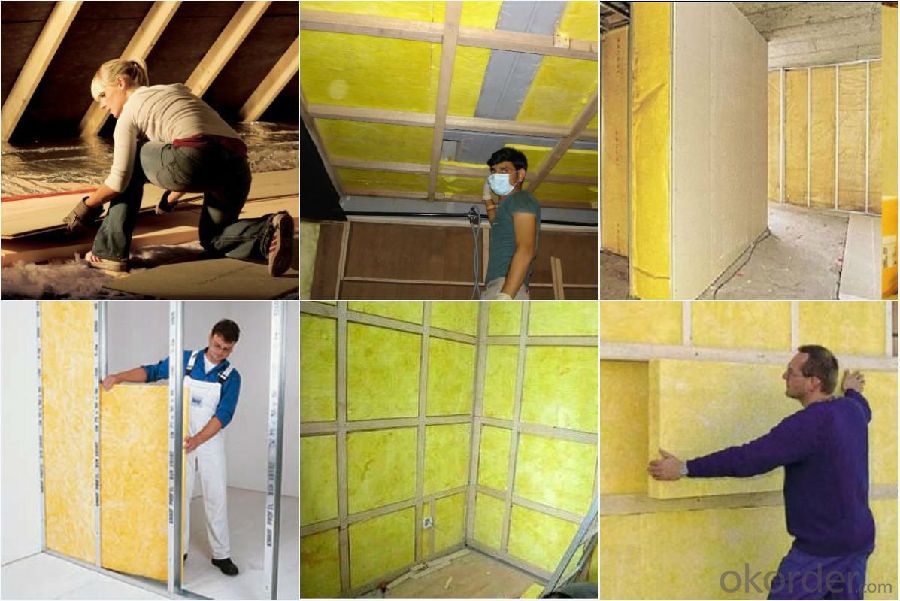
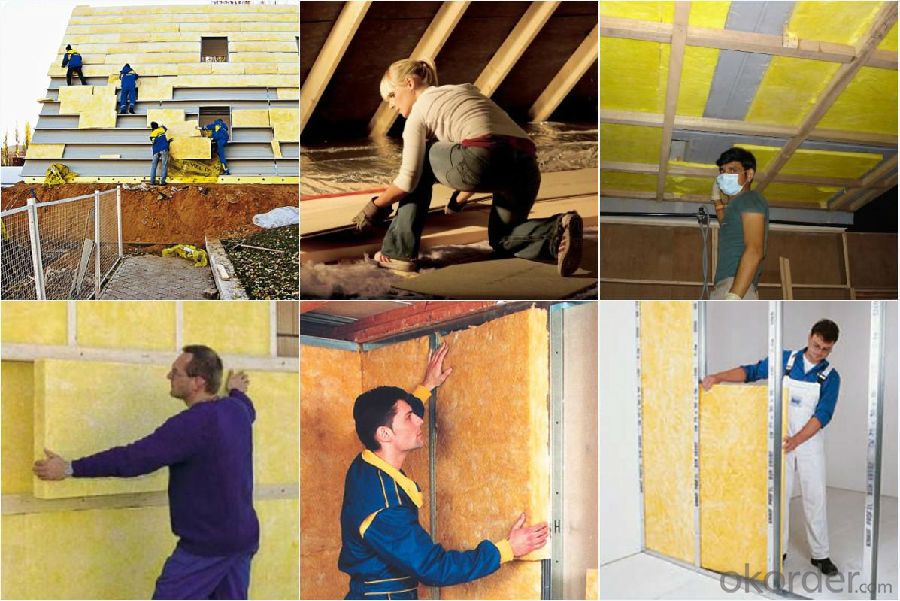
5.FAQ
We have organized several common questions for our clients,may help you sincerely:
①How about your company?
A world class manufacturer & supplier of Glass Wool Blanket is one of the large scale professional investment casting production bases in China,consisting of both casting foundry forging and machining factory. Annually more than 8000 tons Precision casting and forging parts are exported to markets in Europe,America and Japan. OEM casting and forging service available according to customer’s requirement.
②How to guarantee the quality of the products?
We have established the international advanced quality management system every link from raw material to final product we have strict quality test; We resolutely put an end to unqualified products flowing into the market. At the same time, we will provide necessary follow-up service assurance.
- Q:Is fiberglass mat tissue resistant to moisture vapor transmission?
- Yes, fiberglass mat tissue is resistant to moisture vapor transmission.
- Q:Is fiberglass mat tissue resistant to UV degradation?
- Fiberglass mat tissue is generally resistant to UV degradation to some extent. However, its level of resistance may vary depending on the specific type and quality of the fiberglass mat tissue. UV degradation occurs when prolonged exposure to ultraviolet (UV) radiation from the sun causes the degradation of materials. This degradation can lead to discoloration, brittleness, and reduced strength in the material. Fiberglass mat tissue is often manufactured with additives and coatings that provide some level of UV resistance. These additives and coatings help to protect the fibers from the damaging effects of UV radiation. However, it is important to note that the level of UV resistance can vary between different manufacturers and products. To ensure maximum UV resistance, it is recommended to choose fiberglass mat tissue that is specifically designed for outdoor applications and has been tested for UV stability. Additionally, proper maintenance and periodic inspections can help to identify any signs of UV degradation and allow for timely repairs or replacements if necessary.
- Q:Can fiberglass mat tissue be used for boat building?
- Certainly, fiberglass mat tissue is a viable option for boat construction. It is a versatile and lightweight material that is frequently utilized in the building of boats. Its composition consists of thin fiberglass strands woven together to form a mat-like structure. This material is renowned for its exceptional strength-to-weight ratio, making it an optimal selection for boat builders. The utilization of fiberglass mat tissue in boat construction primarily serves to fortify the structure and provide added durability. It can be applied to various parts of the boat, including the hull and deck, to enhance its resilience and safeguard it against impacts. Moreover, it can be employed to create a smooth and uniform surface, which is crucial for achieving a professional-grade finish. One of the notable advantages of employing fiberglass mat tissue in boat construction lies in its ease of application. It can be effortlessly tailored to the desired size and molded to fit the desired shape, allowing for flexibility and customization. Additionally, it can be easily layered with other materials, such as epoxy resin, to create a robust and dependable composite. Furthermore, fiberglass mat tissue exhibits exceptional resistance to water and corrosion, rendering it suitable for marine environments. It is also recognized for its superb thermal and electrical insulation properties, both of which are highly advantageous for boat builders. In summary, fiberglass mat tissue is indeed a suitable choice for boat construction. Its lightweight nature, impressive strength, and resistance to water and corrosion establish it as a dependable and popular option among boat builders.
- Q:Is fiberglass mat tissue resistant to mold growth?
- Indeed, mold growth is effectively resisted by fiberglass mat tissue. The composition of fiberglass involves the interlacing of tightly woven glass fibers, yielding a substance highly impervious to moisture and mold. Moreover, fiberglass possesses a non-porous nature, signifying its inability to absorb water, thereby further deterring the proliferation of mold. Consequently, fiberglass mat tissue emerges as an optimal selection for circumstances necessitating mold resistance, such as insulation, wallboards, and various construction materials.
- Q:Is fiberglass mat tissue suitable for outdoor applications?
- Indeed, outdoor applications are well-suited for fiberglass mat tissue. This particular material is constructed from interwoven fiberglass strands, all effectively bound together by a specialized adhesive. Its exceptional resistance to water, weather, and UV radiation renders it particularly well-suited for deployment in outdoor settings. Its adaptability extends to a range of outdoor applications, including roofing, insulation, and construction projects. The waterproof and weatherproof qualities of fiberglass mat tissue guarantee its robustness and longevity even in the face of harsh environmental conditions. Moreover, its lightweight nature and user-friendly handling characteristics make it a highly versatile option for various outdoor endeavors.
- Q:Can fiberglass mat tissue be used for insulation in commercial buildings?
- Fiberglass mat tissue can indeed be used for insulation in commercial buildings. Fiberglass is a commonly used insulation material due to its excellent thermal performance, durability, and cost-effectiveness. Fiberglass mat tissue is typically made from fine glass fibers that are bonded together using a resin. This mat can be applied to walls, ceilings, and other surfaces to improve the building's energy efficiency by minimizing heat transfer. In commercial buildings, proper insulation is crucial for maintaining a comfortable indoor environment and reducing energy consumption. Fiberglass mat tissue offers several advantages for insulation purposes. It has low thermal conductivity, meaning it can effectively resist heat flow and reduce heat loss or gain through the building envelope. This results in lower energy bills and improved temperature control. Additionally, fiberglass mat tissue is lightweight and easy to install, making it a convenient choice for commercial buildings. It can be easily cut and shaped to fit around obstacles, ensuring a tight seal and preventing air leakage. This helps to further enhance the insulation's effectiveness. Furthermore, fiberglass mat tissue is non-combustible, providing an added safety benefit in commercial buildings where fire protection is crucial. It does not contribute to the spread of flames, and its fire resistance properties can help contain fires and provide valuable escape time in case of emergencies. Overall, fiberglass mat tissue is a suitable and widely used insulation material for commercial buildings. Its thermal performance, ease of installation, and fire resistance make it a reliable choice for achieving energy efficiency and comfort in commercial spaces.
- Q:Does fiberglass mat tissue require any special precautions during disposal?
- Special precautions are necessary when disposing of fiberglass mat tissue. The composition of fiberglass mat tissue can result in the release of fine particles and fibers into the air if it is handled or broken. These particles and fibers can be harmful if they are inhaled or come into contact with the skin and eyes. Therefore, it is important to take certain precautions when disposing of fiberglass mat tissue. To begin with, it is advisable to wear suitable personal protective equipment (PPE) such as gloves, goggles, and a respirator mask in order to minimize the risk of exposure. This will help to prevent the inhalation of airborne particles and fibers, as well as protect the skin and eyes from any potential irritation. Additionally, fiberglass mat tissue should be placed in sealed bags or containers during disposal to prevent loose fibers from becoming airborne during transportation. It is also recommended to label these bags or containers as "hazardous" or "fiberglass waste" so that others are aware of the potential risks involved. Furthermore, it is vital to adhere to local regulations and guidelines for the disposal of fiberglass mat tissue. Depending on the specific location, there may be specific requirements for handling and disposing of hazardous waste materials, including fiberglass. These regulations exist to safeguard public health and the environment. In conclusion, special precautions are necessary when disposing of fiberglass mat tissue in order to minimize the risk of exposure to harmful particles and fibers. Wearing appropriate protective equipment, using sealed containers, and following local regulations are all crucial steps to ensure safe disposal practices.
- Q:Can fiberglass mat tissue be used for pipe insulation?
- Typically, pipe insulation does not involve the use of fiberglass mat tissue. Fiberglass mat tissue is a thin substance commonly utilized for reinforcement in different industries, rather than for thermal insulation or preventing heat loss in pipes. When it comes to insulating pipes, materials like foam, mineral wool, or fiberglass pipe insulation are more commonly employed. These materials are specifically designed to offer thermal insulation and safeguard pipes against heat loss, condensation, and freezing.
- Q:How does fiberglass mat tissue compare to mineral wool insulation?
- Fiberglass mat tissue and mineral wool insulation have different properties and applications. Fiberglass mat tissue is typically used as a reinforcement material for composites or as a facing material for insulation products. It provides good strength, flexibility, and resistance to moisture. On the other hand, mineral wool insulation is primarily used for thermal and acoustic insulation in buildings. It offers excellent fire resistance, sound absorption, and thermal performance. While both materials have their own advantages, the choice between them depends on the specific requirements of the project.
- Q:What is the composition of fiberglass mat tissue?
- Fiberglass mat tissue, also known as fiberglass mat or fiberglass veil, is made up of a combination of fiberglass fibers and a binder material. The fiberglass fibers used in the composition are typically made from silica, a naturally occurring mineral. These fibers are known for their high strength and durability. The binder material used in fiberglass mat tissue can vary, but commonly includes substances like urea-formaldehyde, acrylic, or polyester resins. The role of the binder is to hold the fiberglass fibers together and provide structural integrity to the mat. In addition to the fiberglass fibers and binder, other additives may be included in the composition of fiberglass mat tissue. These additives can include substances such as pigments, fire retardants, or coatings, depending on the specific application and desired properties of the mat. Overall, the composition of fiberglass mat tissue is a combination of fiberglass fibers and a binder material, with additional additives depending on the intended use. This composition allows fiberglass mat tissue to possess excellent strength, flexibility, and resistance to various environmental factors, making it a versatile material used in various industries such as construction, automotive, aerospace, and marine.
1. Manufacturer Overview |
|
|---|---|
| Location | |
| Year Established | |
| Annual Output Value | |
| Main Markets | |
| Company Certifications | |
2. Manufacturer Certificates |
|
|---|---|
| a) Certification Name | |
| Range | |
| Reference | |
| Validity Period | |
3. Manufacturer Capability |
|
|---|---|
| a)Trade Capacity | |
| Nearest Port | |
| Export Percentage | |
| No.of Employees in Trade Department | |
| Language Spoken: | |
| b)Factory Information | |
| Factory Size: | |
| No. of Production Lines | |
| Contract Manufacturing | |
| Product Price Range | |
Send your message to us
Glass Wool Insulation Glass Wool Insulation Manufacturers
- Loading Port:
- Tianjin
- Payment Terms:
- TT OR LC
- Min Order Qty:
- 5000 m²
- Supply Capability:
- 20000 m²/month
OKorder Service Pledge
OKorder Financial Service
Similar products
New products
Hot products
Hot Searches
Related keywords
